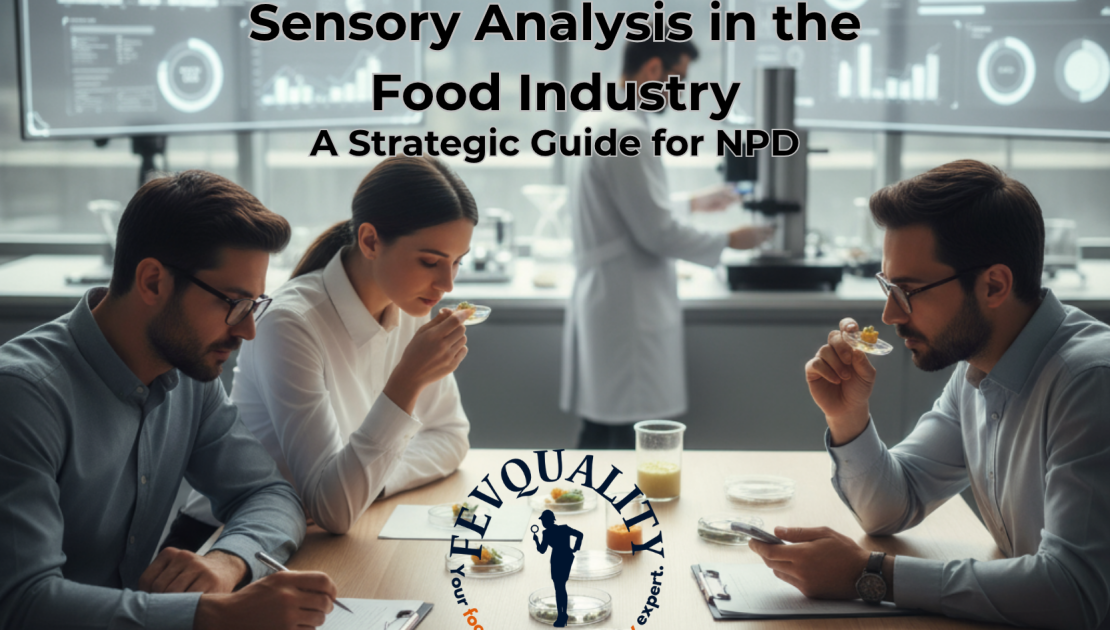Sensory Analysis in the Food Industry

Sensory Analysis in the Food Industry: A Strategic Guide for NPD
Every food business understands the non-negotiable importance of food safety. Frameworks like HACCP are the bedrock of our industry, providing a systematic approach to identifying and controlling hazards. But what happens after the safety checks are passed? A product can be flawlessly safe, compliant with all contaminants regulations, yet still fall silent on the supermarket shelves.
This is the commercial reality that keeps product developers awake at night. The risk isn’t contamination; it’s indifference. The solution lies in a discipline that runs parallel to food safety science: a deep, methodical understanding of the consumer experience. By integrating sensory analysis and consumer research into the heart of New Product Development (NPD), we can de-risk the commercial journey just as rigorously as we de-risk the production line.
The Science of Perception: Demystifying Sensory Analysis
It’s tempting to think of taste as purely subjective, a matter of personal preference. But sensory analysis provides the tools to move past “I like it” and into objective, actionable data. It’s a science dedicated to measuring how our products are perceived through all five senses.
Think of it this way:
-
Descriptive Analysis: This is where a highly trained panel acts like a finely tuned scientific instrument. They don’t give opinions; they provide data. They’ll meticulously identify and score dozens of attributes—from the “initial burst of sweetness” and “lingering bitterness” to “surface roughness” and “ease of fracture.” This detailed fingerprint is your product’s objective truth, a vital benchmark for any modification.
-
Discrimination Testing: Can consumers actually tell the difference? This is the core question answered here. Whether you’re considering a more cost-effective ingredient or ensuring consistency between batches, these tests provide a statistical ‘yes’ or ‘no’ on whether a sensory difference is perceptible.
-
Affective (Hedonic) Testing: Ultimately, the question is simple: will people enjoy it? Affective tests engage real consumers to gauge preference and acceptance. Using established tools like the 9-point hedonic scale, this research provides a clear verdict on a product’s appeal, moving well beyond the opinions of the internal team.
Beyond the Palate: Uncovering Consumer Motivations
Sensory analysis provides the ‘what’ the objective profile of your product. Consumer research, however, uncovers the all-important ‘why’. It explores the complex web of factors that drive a consumer to choose one product over another.
This research is critical for understanding:
-
Attitudes and Perceptions: A consumer’s perception of “healthiness,” “naturalness,” or “convenience” can be just as important as the taste. Recent studies on hybrid meat products, for instance, reveal a consumer desire for reduced meat consumption that still feels familiar and convenient—an insight that pure taste-testing would miss.
-
The Emotional Connection: Food is rarely just fuel. It’s tied to comfort, celebration, novelty, and nostalgia. Modern research methods can now capture these emotional responses, revealing whether a new flavour profile is perceived as “exciting” and “innovative” or “strange” and “disappointing.”
-
Context and Behaviour: A product’s success is tied to its role in a consumer’s life. Understanding this context—is it an after-school snack, a weekend treat, a quick meal solution?—is fundamental to getting the product’s format, packaging, and marketing right.
A Practical Framework: Integrating Research into Your NPD Process
The real power emerges when these disciplines are woven into the fabric of the NPD process, creating a cycle of feedback and refinement.
-
The Spark (Concept & Ideation): Consumer research identifies the “white space” in the market. Sensory profiling of competitor products then helps define the sensory target you need to hit to win in that space.
-
The Build (Development & Optimisation): As prototypes are created, the trained descriptive panel provides fast, precise feedback. This allows formulators to precisely sculpt the sensory experience—dialling down an off-note, boosting an aroma, or perfecting a texture.
-
The Verdict (Validation): A refined prototype is then taken to consumers for hedonic testing. This stage validates its overall appeal and provides a clear indication of its potential for market success.
-
The Standard (Commercialisation & QA): Post-launch, sensory analysis becomes a cornerstone of Quality Assurance, ensuring the product leaving the factory today has the same winning sensory profile as the one that consumers fell in love with during testing.
In a crowded marketplace, the most successful products are those born from a deep, empathetic understanding of the consumer experience. While food safety ensures a product does no harm, sensory and consumer science ensures it creates delight, encourages repurchase, and builds a loyal following. It is the essential other half of the product success equation.
So, Is Your Product’s Sensory Profile a Strategy, or Just a Matter of Opinion?
In today’s crowded marketplace, an exceptional taste and a memorable texture aren’t just pleasant details; they are your most powerful commercial assets. They require a strategic approach, blending the scientific rigour of sensory analysis with a genuine understanding of what truly delights your customers. Getting this right is the difference between a one-time purchase and lasting brand loyalty.
That’s where we come in.
Because we believe the most successful products are born from a true partnership. For our valued partners and contract manufacturers in Turkey, our expert local team is ready to provide dedicated support and insight at fevkalite.net.
Get in touch with our experts today, and let’s work together to ensure your product doesn’t just get noticed on the shelf, but becomes a lasting favourite in your customers’ homes.
